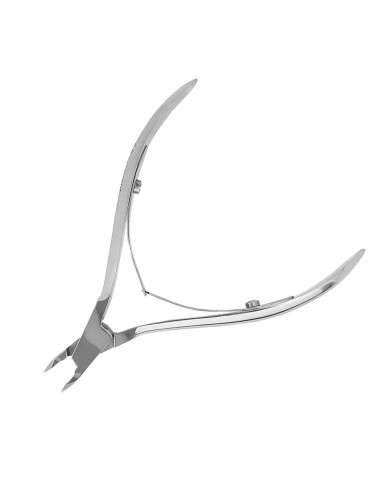Cuticle clippers for nails Bionessa B.21.4
Professional cuticle clippers Bionessa B.21.4
Bionessa B.21.4 clippers are characterized by a smaller size, thanks to which they fit perfectly in each hand. The polished finish makes the pliers look stylish and professional. The handles are susceptible to the slightest pressure, not allowing the hand to get tired during work. Every movement is smooth and pleasant. Every cut is smooth and precise thanks to the hand-processing of the cutting edges. Perfectly profiled blades have been designed in such a way as to ensure full visibility of every movement. This shape of the blades allows you to work on the cuticles right next to the nail shaft, without exposing the skin to damage and tearing.
Professional cuticle clippers.
- blade length 4 mm (+/- 0.5 mm),
- pliers length 97 mm (+/- 1 mm),
- hand-sharpened cutting edges,
- double spring,
- polished finish,
- made of surgical steel,
- they do not dull and do not rust,
- product intended for disinfection and sterilization in an autoclave.
Proper use and storage of Bionessa tools:
- use tools only for the purposes for which they are intended
- Always store tools with the blades facing up
- avoid dropping, hitting tools to prevent damage to cutting edges
- store tools in a dry place and in the packaging intended for this purpose. The air in the room should be dry, and the tools should not be stored in plastic wraps. This restricts the access of air and can cause steam condensation, which is very harmful to the steel.
- tools should be handled very gently. Some mechanical damage is invisible to the naked eye. Blades, tips and mechanisms require special care.
Proper maintenance of Bionessa tools:
Remember that the correct process of cleaning, disinfection and sterilization should be carried out after each use of the tools.
Cleaning: Clean the instruments thoroughly from any dust, tissue, nail or hair residues with a brush. Then rinse the tools with distilled water*.
* Use distilled water for cleaning to avoid discoloration and rusting of the tools. Tap water contains minerals that can deposit on instruments and adversely affect the sterilization effect.
Disinfection: The disinfection process can be carried out in a vessel filled with a disinfectant preparation or solution, or in an ultrasonic cleaner using preparations intended for this purpose. Make sure the tools are completely immersed in the solution. When disinfection is complete, remove the instruments and allow them to dry completely*.
* Cleaning/disinfecting solutions should be prepared according to the instructions on the product insert. We especially recommend observing the concentration of the solution - this has both hygienic and economic consequences. Too high concentration can damage the tools, while too low concentration will not disinfect selected microorganisms.
Sterilization: The sterilization process of the tools is carried out in an autoclave. The recommended sterilization method is overpressure steam sterilization at 134° Celsius (do not exceed 200°). The sterilization process should be carried out in accordance with the instructions indicated on the device intended for sterilization. Remember to open all tools so that sterilization covers every part of the tool. Before sterilization, the moving mechanisms of the instruments should be lubricated with a special preparation. For steam sterilization, we recommend the use of a water-soluble lubricant.










